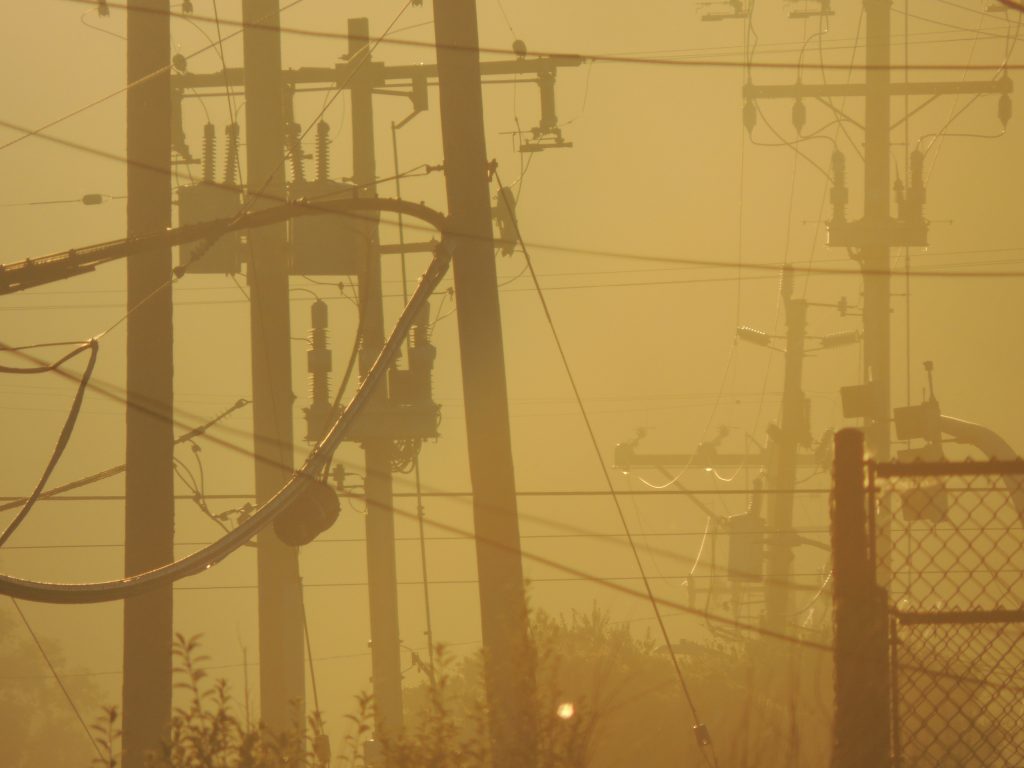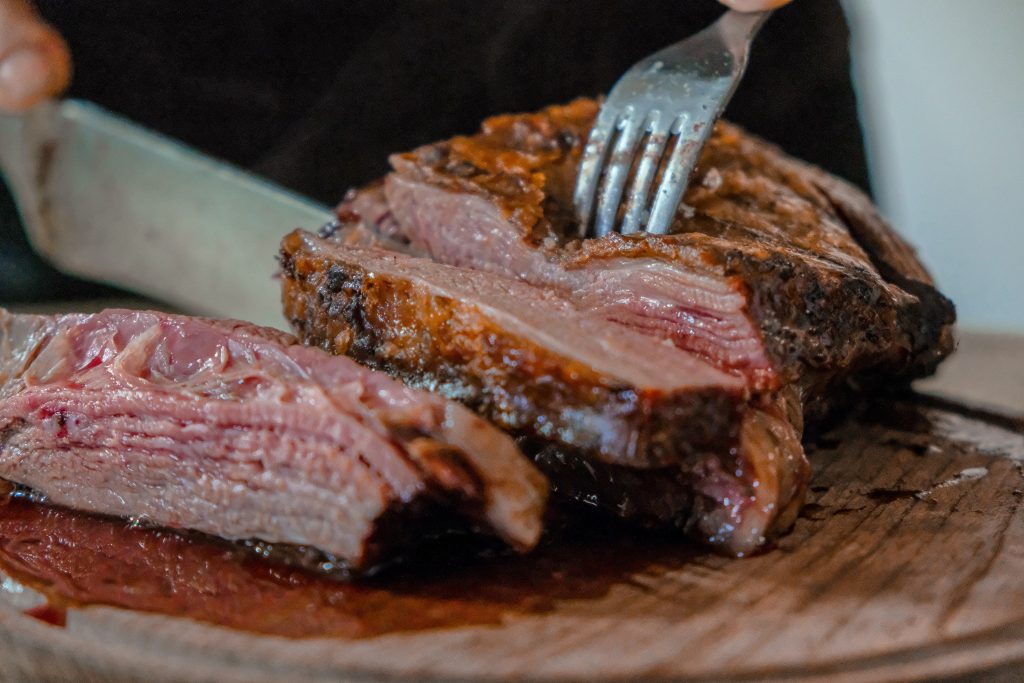To: The Impact Readers

The fact that this is happening again at the expected scale the outages happened at last year is partially hilarious and disappointing – especially if you will be impacted.
However, when we dive into the complexity of the situation and how PG&E got 2020’d into this situation and how multiple other market dynamics caused this to be soon mess.
This past week death valley recorded 130 F temp numbers and due to this excessive heat crazy thunderstorms and weather patterns seem to be on the horizon, especially for Northern California. The California ISO even declared a stage 3 emergency to protect the grid from causing wildfires or entirely collapsing due to excessive heat.
This is the worst it has been since the 2001 energy crisis and it seems like we are in for a rough time before renewable based infrastructure can catch up to fix these patches.
Here’s a breakdown of why we expect this wildfire season to be one of the most painful to get through:
Demand Response Programs Haven’t Got Enough Saturation
Companies like Ohm Connect have hundreds of thousands of users, but predominately control plug and HVAC loads within the home. While not considering for EVs and Water Heaters – the other two major variable load appliances within the home.
For the grid to survive these extended demand response periods caused by potential heat waves – homeowners will literally need to shut down their entire house to stay under quota. Effectively limiting people to bare essentials.
PG&E Required To Depend On Temp Standby Generators
Most utility customers are expecting that PG&E will deploy standby diesel generators in their communities to keep power on. We even covered why PG&E didn’t get approval to deploy natural gas (more environmentally friendly) generators.
Deploying the number of generators they need to effectively cover their entire customer base will be impossible to do especially since these aggressive weather patterns don’t seem to be one off at this point this season.
Renewable Energy Plants + Old Grid Infrastructure Spells Doom
We are in a transitional phase and ripping the band-aid off is going to hurt. This wildfire season is going to act as a major inflection point in the CA- ISO as a whole when it comes to deploying solar + storage. With old grid architecture being slowly replaced with microgrid pilots and solar deployments growing in quantity, we are bound to see significant growing pains this season from a grid energy management front that won’t be solved for at least a few years.
Excessive heat still impacts microgrids, don’t get me wrong there, however the fundamental idea of having isolated grids – controlled via software – that shut down based on highly regional temperature and weather demands can result in significantly less impact to a customer base than having to shut down entire communities due to grid equipment failure concerns.
Infrastructure Isn’t Cheap
And it won’t be getting “cheaper”. Everyone has to make money somewhere…PG&E and shareholders have minimal incentive outside from social pressures to invest in a full grid rebuild that is worth Trillions in dollars.
As a government supported monopoly we highly expect any form of infrastructure repairs or rebuilds to be passed to the balance sheet of the governments. Meaning nothing will change this year.
In Conclusion
We expect capacity issues and wildfire triggered power safety shutoffs to continue and increase in severity over the remainder of the year – going into at least next year’s wildfire season.
Sign up for The Impact and learn the perspectives behind the latest sustainability trends

New Age Meats, a biotechnology company growing meat from animal cells, announced $2M in seed extension funding, bringing their total seed round to $4.7M. New Age Meats crafts meat to be tastier, safer, and more sustainable than meat made any other way.
Why does this matter?
What’s next?

OKAY – So random idea…but if we all pooled together $100 bucks we might be able to afford the down payment to potentially get a loan to buy this bad boy. WE COULD ALL SHARE!!
The Hyperion XP-1 is everything a hydrogen and car enthusiast has dreamed of. The perfect hybrid of ridiculous and borderline unnecessary performance specs while also doing right by the environment.
Hyperion literally made this car as a way to demonstrate the insane amount of engineering that had to go into making a truly efficient PEM for hydrogen. Hyperion likely will end up selling limited numbers of these cars and focus on licensing most of the tech to other manufacturers.
The advantages of hydrogen don’t need to be restated but what Hyperion does prove is that hydrogen offers rapid refueling, clean travel, and crazy high performance in comparison to an Electric Vehicle. The hydrogen economy will be surrounding pure performance consumer vehicles not meant for mass market and large heavy duty commercial workloads like Nikola is doing.

Organic waste bans are going into place because food waste is a huge driver of climate change. Additionally, consumers are now paying attention to the brands they’re buying from.
This week, I talked with Ilan Gluck, General Manager at Wasteless, to discuss another part of the food supply chain where there is food waste. Wasteless was founded in 2016, and today is active throughout Europe and the United States. On average, Wasteless’ retail customers see organic food waste reduced by upwards of 40% and profit margin growth of more than 10%.
Wasteless is an AI-based tracking solution for grocery stores to offer customers dynamic pricing based on product expiration date, helping retailers optimize markdowns, increasing their profitability. Wasteless is a great example of how food supply chains, specifically supermarkets, are interfacing with consumers to reduce food waste. Minimizing food can reduce carbon emissions by up to 70GTon over the next 30 years.
Can you describe what your company does? What is your value proposition to your customers?
Wasteless is an Israeli company helping retailers to prevent food waste. We focus on optimizing when to mark down prices to maximize sales and prevent waste.
Today, supermarkets are marking down food by up to 50%, the day before it expires. However, there are two issues with this. First, because it is marked down only one day before it expires, it may not be attractive enough to be sold. Second, if stores do sell it, they’re selling it for 50% markdown and are not making any profit.
Wasteless more strategically optimizes prices leading up to the expiration date of food. As an example, three days before a particular product expires, the Wasteless system may mark down the price by 5%. Depending on what works for that specific item, with a specific vintage, there may be more aggressive markdowns leading up to the expiration date. The magic of the Wasteless AI is its ability to know the exact minimum amount of markdown required to still achieve the goal of selling a product before it expires and is thrown away. Wasteless helps grocery retailers sell perfectly good food.
What is the current ecosystem/market landscape?
There are 3 main sectors in the ecosystem.
The priorities, as set by ReFED and EPA are clear: preventing food waste is the best possible solution. Secondary markets and donations perpetuate the problems, rather than solve the supply chain inefficiencies that cause food waste. To pull everything together, and ReFED and Champions123 are networks of businesses, nonprofits, foundations, and governments advocating for and committing to reducing food waste.
Can you discuss both the market and policy in both Europe and the US?
The organic waste bans and supporting laws/regulation in some European countries are ahead of where they are in the US – and they’re enacted on a national level.
Italy and France have done a lot to spur innovation on the consumer and retail side to help reduce food waste. Specifically, when Italy hosted the World’s Fair, there was a whole sustainability element to it. Food waste was a huge component, and this was before food waste was really talked about.
Unfortunately, both France and Italy have increased tax rebates on donations. Which takes away the entire incentive for businesses to eliminate the scourge of food waste. No other industry wastes one third of what it produces. Imagine that one third of cars end up scrapped, before having driven a single mile!
Italy’s policies have changed how companies think about waste, as it can become a substantial drag on profitability. Wasteless is working hard to make prevention the priority.
Compared to Europe, the US will and has been implementing organic waste bans on a state-by-state basis. Organic waste bans on a state level are helpful in terms of addressing the problem and quantifying the economics. However, state level regulations are not enough to change the market.
For businesses that operate regionally or nationally, it’s tough to make decisions on a state-by-state basis. If one state passes a law, a supermarket might not change their whole operation across different states. Instead, they might just take the financial hit and pay the cost of the organic waste. It would be great, if we could work together, with business and (state) government, to make grocery retail more profitable, by preventing food waste.
When food waste bans went into effect in Europe, what changes did you observe?
The first main change was retailers began to analyze how much was being wasted and where it was coming from. Now that they’ve quantified the problem and identified the source, they can begin addressing the problem in a meaningful, efficient way.
As a result, we’ve seen increased investments in advanced supply chain planning, donation services, secondary market platforms and other waste reduction technologies, like Wasteless. In addition, we’ve seen supermarkets both in Europe and the US get a lot better at repurposing spoiled or imperfect products. So, an imperfect tomato can be repurposed into tomato salad, for example.
What does the future look like?
Generally speaking, we can look to where Europe is today to see where the US will be in a couple years with regards to food waste.
The biggest thing I’m excited about is consumer awareness and education. There will be a big evolution in consumer sentiment toward sustainability and food waste, the same way customers care today about organic – every supermarket and supplier now has to focus on organic.
We’re going to see investments from the retailers and suppliers to reduce waste, and it won’t stop there. They will put that marketing in the front of their store about how they’re reducing waste. There will be benefits financially along their supply chain, as well as from customers.
We’re already seeing a lot of momentum around food waste reduction in the US. Most conversations about corporate sustainability at least mention food waste and consumers appreciate when their supermarket takes a proactive approach toward being more sustainable. There are some great venture-backed innovators tackling this massive problem, so I’m excited to see how the movement continues to grow in the coming years.
Our Outlook
Forecasting is a difficult problem for supermarkets. Wasteless is a solution that solves the issue of having excess food. With a combination of their technology, policy, and growing consumer awareness, we will see a decrease in food waste – but not just in supermarkets, but also along the supply chain.
Stay Tuned! Next week our next podcast episode finally releases!! Editing took a bit of time on this one, but trust me – it is a blast…it surrounds EVs and the future of transport.
In the meantime check out our episode with Liam Berryman and let us know what you think!
Check out and subscribe to our Youtube Channel for future episodes!
Writers: Swarnav S Pujari, Ian Sumner, Daniel Kriozere
If you aren’t absolutely thrilled with The Impact, reply and let us know why. Or you can unsubscribe from all updates by clicking here.
Copyright © The Impact 2020. All Rights Reserved || 19 Morris Ave, Bldg 128, Brooklyn NY 11205
Develop your market map of up-and-coming climate startups and market opportunities by subscribing to our weekly newsletter for free.